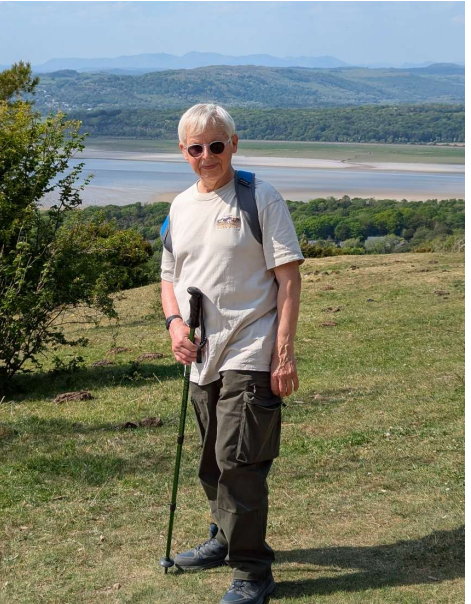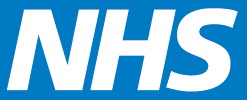 Bruce is a retired Professor of Earth Sciences at the University of Leeds. In September 2020, he suffered a stroke. Five years on, he is now an active member of the West Yorkshire Integrated Stroke Delivery Network (ISDN) Life After Stroke (LAS) Co-production Group, which consists of stroke survivors, carers, voluntary and community organisation representatives, and NHS professionals, working together to improve experiences and outcomes for people following a stroke.
Bruce is a retired Professor of Earth Sciences at the University of Leeds. In September 2020, he suffered a stroke. Five years on, he is now an active member of the West Yorkshire Integrated Stroke Delivery Network (ISDN) Life After Stroke (LAS) Co-production Group, which consists of stroke survivors, carers, voluntary and community organisation representatives, and NHS professionals, working together to improve experiences and outcomes for people following a stroke.
Bruce has documented his experience – from his initial stroke, his treatment, through to his recovery. In a series of blogs, we are sharing Bruce’s experience, with the hope that it inspires fellow stroke survivors on their journey to recovery.
Part four: the TRICEPS trial
To mark World Stroke Day (29 October), I thought it pertinent to bring awareness of an exciting development in stroke research.
Early this year, I chanced upon a BBC news item about a clinical trial called TRICEPS which is evaluating a new approach to help your arm benefit from exercising. The trial, based in the University of Sheffield, is testing an approach to improving the way the arm responds to doing exercises by sending electrical stimulus to a major nerve.
The principles behind it have been shown to work on patients who have had electrodes clinically implanted, but this is trying out an approach that is more user-friendly.
The trial was asking for participants whose arm had been affected by a stroke, and it seemed promising, so I contacted the team at Leeds Community Health for more information. A couple of weeks later, I was invited to meet them at St Mary's hospital, where more details were explained to me, and staff carried out a series of tests to establish how bad my right arm was. Fortunately, I met the criteria for the trial - not totally useless but with plenty of room for improvement - so I signed on the dotted line.
This meant that I was agreeing to carry out an hour of exercises a day, five days a week for 12 weeks - in practice, probably more arduous than it sounds! Before I could start, I had a home visit from a physiotherapist to hand over the kit and set up a series of exercises. The equipment consisted of a movement sensor for my wrist, which alerted the stimulator that my arm was in action, the stimulator itself, a black box which generated the electrical signal, and an earpiece with electrodes to send the signal to the nerve. The whole setup was controlled by an app on a smart phone, which timed what I was doing and kept a record for the researchers to analyse afterwards. Once I hit “start”, the app began timing the session (although I could pause whenever I wanted to) and when my hour was up, it switched off. The tricky bit was the earpiece which I had to fit into the right bit of my ear. It seemed daunting for the first few days, but I got used to it.
The exercises themselves were quite challenging at first, but they were designed to be achievable for me and were fine-tuned by the physiotherapist during the home visit. I sat at my kitchen table while the physio scoured the kitchen for objects of different weights and sizes for me to try until we had a programme that involved me picking up, putting down, turning over and cutting things up - everything to be done thirty times. There was a catch, I couldn't feel anything when I was using the kit, so it was perfectly possible that I was set up as a control rather than getting a real signal. However, I reckoned that even if it was just a placebo, that amount of exercise must have an effect.
As the weeks passed, I could feel my dexterity improving and once my 12 weeks were up, I went back to the hospital to repeat the exact same tests. Since then, a further 12-week period has passed and I have been back to the hospital for testing a third time, to see if the improvements have stuck. I won’t find out if I was really getting the stimulus, or was just a control, until the entire trial is complete, but for now the test results confirmed that my ability to move my arm and manipulate things has got better, and things have not deteriorated since I stopped doing the exercises. On some tests, I have even continued to improve, perhaps because I have begun to do things on a daily basis that were formerly beyond me. I now reach for things with my right arm and use it to try to pick things up off the floor. After holding a knife in my weak hand to cut up playdough thirty times a day, I can now use one to slice cucumbers - even carrots on a good day.
One of the most striking things about being in the trial was the difference it made knowing that my moves were being monitored. All stroke survivors are given exercises by our physios and go away determined to keep doing them, but for whatever reason the day comes when we miss a day and discover that there is no loud crash, and the world does not end. I have certainly found that over time I find it hard to keep up with exercises, but with the Triceps trial, this wasn’t an issue. The difference was that I was wired into the TRICEPS app; knowing that my progress was being recorded made an enormous difference and I didn't cheat once! By the end of the trial, I wished I could have a similar device to keep track of my normal daily exercise routine.
About the trial
As of October 2025, when this blog was published, the TRICEPS trial is still recruiting new volunteers, so if you think it might be for you, visit the webpage: TRICEPS - Participating Centres to find your local centre.
TRICEPS – which stands for TRanscutaneous lImb reCovEry Post-Stroke - investigates whether arm recovery after a stroke can be improved with a treatment called Transcutaneous Vagus Nerve Stimulation (TVNS).









